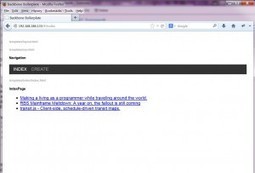With so many SPA-style frameworks emerging in the last couple years, you may wonder what makes Durandal unique or different. Why would you want to choose it for your next project? I’d like to share a few key points to that end…
Rather than re-invent the wheel, Durandal starts by combining and building on top of three existing libraries. Each of these libraries is very mature, has a large, active community and was strategically chosen because it meets one specific need very well. First we start with jQuery. In some ways you can think of it as a better DOM or the “missing JavaScript core library”. Next, we add in RequireJS, which gives us rich, declarative JavaScript modules. Finally, Knockout provides us with powerful two-way data-binding.
With these three libraries as a foundation, Durandal constructs a thin integration layer and transforms them into a powerful SPA framework. In addition to strategically connecting these libraries, Durandal adds new functionality. Some things Durandal adds are: a client-side router, rich view composition, screen state management, pub/sub, simple conventions, modals/message boxes and more…




 Your new post is loading...
Your new post is loading...








